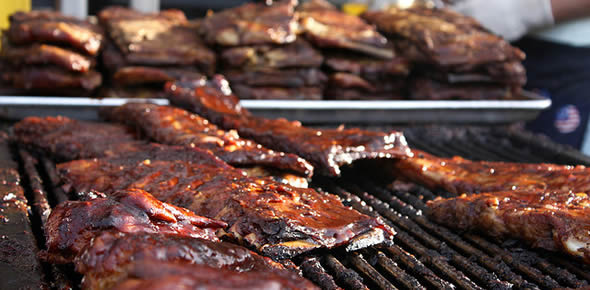
Does Protein Equal Muscles?
If I were I to ask a room of people what protein looks like, I would imagine the majority of those questioned would describe it as some form of beef product. Were I to ask these same people what does protein do, the majority would respond that it builds muscle. While both answers are correct, they barely scratch the surface of the many and varied structures and functions encompassed by the term protein. A detailed look at protein is the focus of this post.
A quick glance at the internet produced the following definition for the term “Protein”;
Protein: A large molecule composed of one or more chains of amino acids in a specific order determined by the base sequence of nucleotides in the DNA coding for the protein.
Alright, so that might seem somewhat complicated, however if we break down each component and extrapolate we can fully explain the role of protein in our bodies, and how proteins are made.
Let us consider the protein complex as a house. Some houses are larger and have more rooms (or components), and some houses are smaller and have less rooms (or components).
When our cells need to produce protein houses they enlist the aid of a workforce, and we will refer to this workforce as “enzymes”. Enzymes help the cells to build the protein houses and can be re-used, an efficient workforce.
Our enzyme workers will require building material for the houses, and this comes in the form of amino acids “bricks”.
If our workforce was to attempt to build a protein house without the aid of a “blueprint”, there would be an enormous risk of building a house which was not up to code and thus unsafe. Luckily our cells provide our enzyme workforce with a “blueprint” to follow while building our protein houses, and this comes in the form of DNA.
In summary, when our cells require a protein “house”, it enlists a workforce of “enzymes” that utilizes DNA “blueprints” to ensure that our protein house is built correctly and to last.
Once we have our protein built and ready, how are we going to use it? Proteins can be used for any structural component of our body. Think about that for a moment, everything from our eyes to our skin to our muscles to our organs are provided structure by the use of protein. Also, proteins play a key role in the formation of hormones, which control our bodily processes. Proteins are also integral in the immune system in the role of antibodies. Our enzyme workforce is also composed of, you guessed it, protein!
So now we know what proteins are used for and how they are made in our cells, how do we get the protein necessary to keep this machinery operating?
Protein Sources
There are a variety of sources of protein available to us on a daily basis. The carnivores among us will appreciate red meat, fish, game meat and poultry as solid sources of protein.
Vegetarians may rest easy as well, as legumes and grains and even whole grain superfoods are now regular items on our supermarket shelves.
However, both carnivores and vegetarians will both be able to enjoy the food which has all the essential amino acids necessary to create protein….the EGG!
Albumin, the protein found in egg whites, contains everything necessary to create protein on an efficient basis. Does this mean we should run to the local supermarket and pick up a gross of eggs and start drinking six-egg power drinks like Rocky? Not quite!
The amount of debate over the incredible edible egg is so rampant, and the research so conflicting, that it will entail an entirely different post in the future.
Red Meat/Game Meat
Perhaps no other source is so recognized with protein as red meat, and for good reason. Red meat provides an excellent source of protein, as it is composed of roughly 25% protein per unit of measure (ie – 100g of red meat would have 25g protein). Also, red meat is chock full of nutrients and minerals. So is it time to rejoice and start eating burgers for breakfast? Not quite!
Red meat is a broad term for any meat which is red when raw. That encompasses everything from extra lean sirloin tip steak to a hunk of fatty ground beef. Also, consider that most large corporate farms utilize a variety of hormones and other chemicals to get their cattle ready for market, and percentages of those hormones will invariably end up in the meat product.
The difficulty with red meat lies in its preparation. As long as the meat is prepared in a manner that limits and reduces fat content, then it can be healthy. However, how many of us truly take the time to ensure the drainage of fat and other baddies?
Game meat, although in general healthier than red meat, tends to fall into the same category and problems.
Poultry
Whether enjoyed at an outdoor barbeque, or on the table at a family dinner, poultry is an excellent source of protein. Poultry of any form tends to have a lower fat (and especially saturated fat) content than its red meat counterpart. Thus, poultry has become somewhat of a star of a variety of different diets. While this star status is well deserved, there are some pitfalls with this source of protein as well.
Poultry runs into the same types of difficulties as red meat when it comes to the amount of hormones and other “baddies” added to the live birds to get them ready for market.
There are also greater risks of cross contamination possible with poultry, as over 13 million estimated cases of salmonella poisoning occur in Canada every year.
Also, preparation is the key for chicken. Eating an oven cooked skinless chicken breast is NOT the same as chomping down on deep fried chicken wings (I wish it were, as I love chicken wings!). In future posts we will be offering some healthy alternative recipes for some of your favourite dishes.
Fish
Imagine, if you will, viewing a pasture filled with cattle of every shape and size which all produce meat of varying sizes and tastes and textures. While this may be fantasy on land, in the waters of the world it is a definite reality. Fish run the gamut from soft, flaky white meat to dense, red flesh. Also, taste ranges from light to extremely “fishy” so there is a style to suit all palates. Fish is also lean and what fat it does possess tends to be of the healthy Omega-3 variety.
When preparing fish, one must always be careful of cross-contamination and to cook the meat fully. While there are trace amounts of mercury present in fish, the risk can be largely reduced by choosing wild, cold-water fish. When choosing canned tuna, opt for shorter-lived breeds which haven’t been exposed to as much circulating mercury (an added bonus is that these breeds are usually the cheaper tuna options).
Legumes/Grains
Vegetarians need not despair of obtaining their piece of the protein pie. There exists a wealth of options for the vegetarian. The challenge facing the vegetarian is that most options available do not contain all of the essential amino acid “bricks” necessary to build their protein “houses”. Thus it is vital to combine different options and overlap their nutritive benefits to achieve maximum protein yield.
The classic example is to combine a whole grain with a legume (ie- bean) to create a full protein. The added bonus of gaining your protein intake via the legume and whole grain route is that items in this category tend to be substantially more inexpensive than meat alternatives. There also exist a new category of “superfoods” which have been studied over the past decade or so, and these will be dealt with in a further post.
If nothing else I hope to have conveyed a sense of the startling amount of functions for which proteins can be utilized. Also, the variety of sources from which we as a society may derive our protein intake on a daily basis creates a situation where no one should become bored with the same old food. As mentioned in this post, we will be posting healthy recipe ideas, which utilize the knowledge of the various nutrition factors we will be discussing.
Dr. Korey Jay BSc DC
References:
Definition of Protein – MedicneNet.com
The Free Library – Nutritional Composition Of Red Meat
Canadian Food Inspection Agency –
Photo Credits: Sifu Renka
 Did you like this article? Please consider
Did you like this article? Please consider  96 Queen Street
96 Queen Street
Leave a Reply